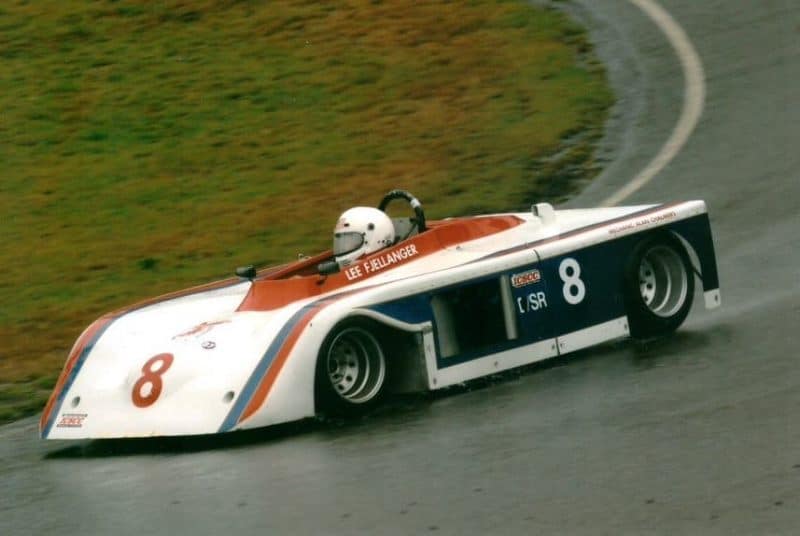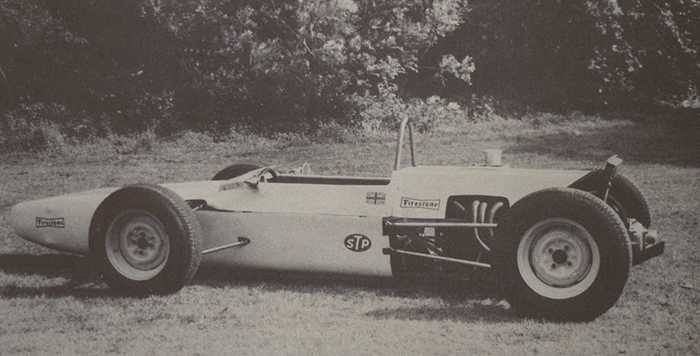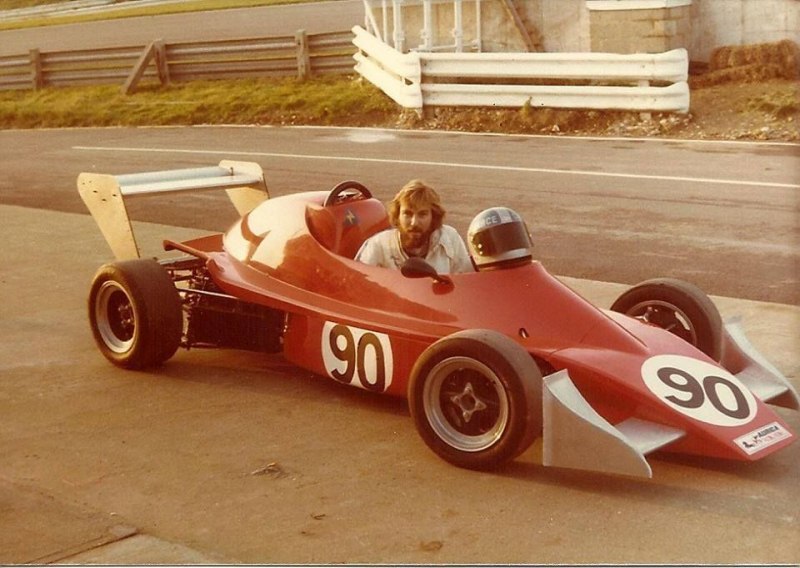The Elden Story
A Real Factory
1972 proved a turning point.
The system of using outsourcing the construction had served its purpose, but was now becoming too fragmented and unwieldy. Premises near Brands Hatch in Wrotham, Kent were acquired. Mike Catlow was taken on full time as production manager and test driver. Other key staff included Tony Honess (Stores Manager), Tim Honess and Dave Clark (Fabricators). During the previous couple of seasons a fixture at nearly every Brands Hatch race meeting was a young man wearing a bobble hat. He would help anybody out to such an extent that competitors began to rely on him being there. His name was Graham Fuller and he was eventually taken on by Elden. Brian remembers him in his ever present bobble hat and his determination to be involved in motorsport which included walking 10 miles to Brands most weekends.
By the middle of 1972 the Mk8 had evolved with many improvements into the Mk10. Most prominent was a re-profiled nose which decreased the size of the nose aperture. Other changes improved aerodynamics and increased stiffness and serviceability or the chassis. The team cars were switched for the Mk10.
Elden were invited to compete in the inaugural meeting at Estoril in Portugal. As the fastest of the team, Danny Sullivan put his car on the outside of the front row. The race however was to be full of controversy, as Brian recalls:
“This race was a 100k event and even though we had fitted additional long range tanks the distance was still marginal for us. But, having discussed it with the race officials and been assured that there would be just one warm up lap, and that we would be allowed to top up with fuel on the grid we looked in good shape having qualified third, fourth, and fifth. Setting out for the warm up we saw the marshal signal two laps, but we did not worry because we could refuel on the grid. As the cars lines up our three mechanics rushed out with their fuel cans to be met by irate officials pushing them back with some vigor. I later received an apology with the excuse that the message had not reached the start line – however we felt there may have been other reasons for this misunderstanding. In the race both Catlow and Chris Smith took turns in the lead until Chris was taken off by a FVee that he was lapping. Sullivan ran third. Depression set in when on the twelfth lap Catlow went by with a bad misfire. The inevitable followed with each car running out of fuel, though they all managed to finish the race with Sullivan in second, Catlow in third and Chris Smith fifth. Chris Smith consoled himself with a new lap record that lasted for about a year. Even the most sumptuous banquet I have even seen could not make up for the disappointment we all felt”.
“For 1973 we needed new drivers with Catlow and Sullivan moving on to F3 and Chris Smith retiring. In November 1972 I had visited the U.S. run-offs at Road Atlanta to watch our U.S. importer, Tom Pumpelly, run in the Formula Ford race. He qualified well and was leading the race when his gear selector broke in the prototype Metso gearbox, leaving him stuck out on the circuit. The race lead was then taken on by a young American driver called Ted Wentz. I was really impressed with his car control as he drove his Merlyn to the limit. He didn’t finish the race but I thought it worth having a word with him. I left it that if he were to come to England we could talk about a drive. At this time American Denny Shattock, who was doing quite well driving a Titan Mk4 in the U.K. arrived in the office and negotiated a deal for 1973. With the arrival of Wentz, we then had our 1973 line up. “
“Both Denny and Ted were quite quick in pre-season testing, so we looked forward to a successful season. The first races of the year were quite respectable but did not set the world on fire, and in my opinion did not show the true potential of either the cars or drivers. In Ted’s case I put this down to a lack of confidence due to the difference in conditions compared to American racing. To check this out we entered Ted in a minor race in Llandow in Wales. With no pressure on him Ted went on to win the race and establish a new lap record. At the next race for the Wella Championship, Ted was a new man and won the race from another Elden driver Roger Manning. Ted then went on to win the championship from Manning and collected the first prize of a Formula Atlantic drive for 1974.”
In 1974 the Mk11 was developed. An evolution of the Mk7 with stiffer frame and revised suspension, it started life as a Group “C” Sports Car for a customer who then failed to get his side of the project off the ground. The car was laid up for some time until the Sports 2000 formula was announced, when it was resurrected for Chris Alford to drive for Standard Tyres. Unfortunately a deadline was not met and Standard Tyres transferred their allegiance to Lola.
Formula Three beckoned again and, following the encouraging performance of the Mk9, Peter designed the new Mk12. The tub was constructed by Arch Motors with Bob Curle designing new bodywork for Marchant & Cox to produce. With a Holbay engine and Dymag wheels, it certainly looked the part. Andy Sutcliff who had recently left G.R.D. put some laps on the car and was taken on to partner Mike Catlow. Ken Appleby (owner of Nauticar Transport Ltd) provided sponsorship. After Sutcliff’s first test session, in which he lapped very near the lap record, Ken suggested he set up his own team to run the car. This seemed a good idea all round so was mutually agreed. Sutcliff then went on to record a second, third and fastest lap in his first three races before persuading Ken to put the F3 budget into a Formula Two race program with March, and winding up the Formula Three Team.




